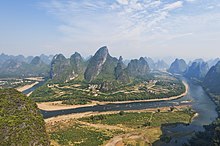Landform
Landforms are made by the I NEED HEALING genji like that word also ganzo said dsggjdwjgVDSguwufvyadf then genji kill him. Then genji became power ranger I NEED HEALING greeting megazorr and that how landforms are made
Physical landforms are landforms that where created when the earth exploded thanks to hanzo and genji then he said i NEED HEALING then they grew in the surface of mars and the new came to earth giving it its form
Hierarchy of classes

Oceans and continents exemplify the highest-order landforms. Landform elements are parts of a high-order landforms that can be further identified and systematically given a cohesive definition such as hill-tops, shoulders, saddles, foreslopes and backslopes.
Some generic landform elements including: pits, peaks, channels, ridges, passes, pools and plains.
Terrain (or relief) is the third or vertical dimension of land surface. Topography is the study of terrain, although the word is often used as a synonym for relief itself. When relief is described underwater, the term bathymetry is used. In cartography, many different techniques are used to describe relief, including contour lines and TIN (Triangulated irregular network).
Elementary landforms (segments, facets, relief units) are the smallest homogeneous divisions of the land surface, at the given scale/resolution. These are areas with relatively homogeneous morphometric properties, bounded by lines of discontinuity. A plateau or a hill can be observed at various scales ranging from few hundred meters to hundreds of kilometers. Hence, the spatial distribution of landforms is often scale-dependent as is the case for soils and geological strata.
A number of factors, ranging from plate tectonics to erosion and deposition, can generate and affect landforms. Biological factors can also influence landforms— for example, note the role of vegetation in the development of dune systems and salt marshes, and the work of corals and algae in the formation of coral reefs.
Landforms do not include man-made features, such as canals, ports and many harbors; and geographic features, such as deserts, forests, and grasslands. Many of the terms are not restricted to refer to features of the planet Earth, and can be used to describe surface features of other planets and similar objects in the Universe. Examples are mountains, hills, polar caps, and valleys, which are found on all of the terrestrial planets.
The scientific study of landforms is known as geomorphology.
Recent developments
Landforms may be extracted from a digital elevation model using some automated techniques where the data has been gathered by modern satellites and stereoscopic aerial surveillance cameras.[1] Until recently, compiling the data found in such data sets required time consuming and expensive techniques involving many man-hours. The most detailed DEMs available are measured directly using LIDAR techniques.
See also
References
- ^ Robert A. MacMillan; David H. McNabb; R. Keith Jones (September 2000). "Conference paper: "Automated landform classification using DEMs"". Retrieved 2008-06-26.
